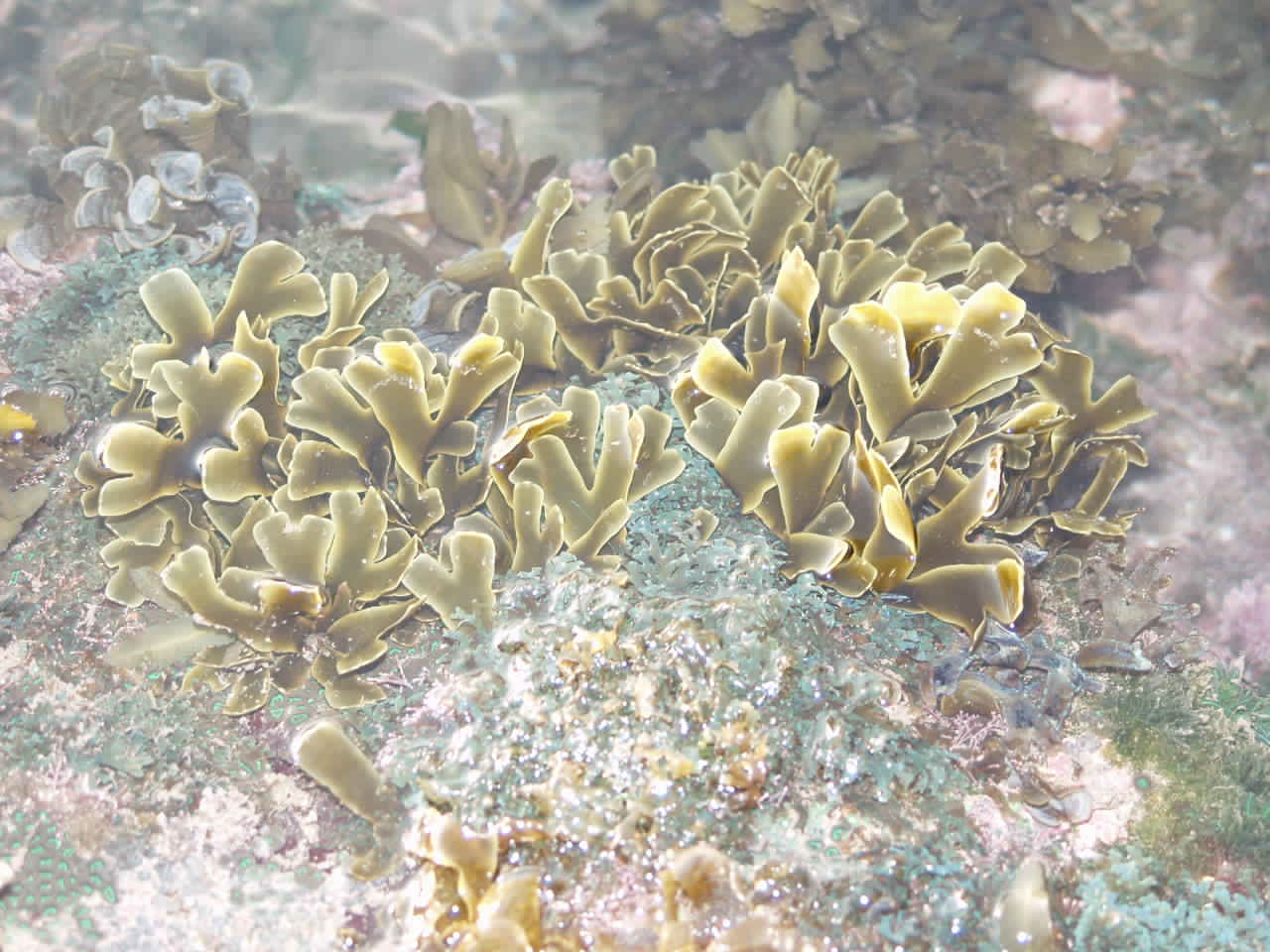Introduction

Seaweed
or benthic marine algae are the group of plants that live either in
marine or brackish water environment. Like the land plants seaweed
contain photosynthetic pigments and with the help of sunlight and
nutrient present in the seawater, they photosynthesize and produce
food. Seaweeds are found in the coastal region between high tide to
low tide and in the sub-tidal region up to a depth where 0.01 % photosynthetic
light is available. Plant pigments, light, exposure, depth, temperature,
tides and the shore charestrstics combine to create different environment
that determine the distribution and variety among seaweeds. They are
basically classified according to colour into three main groups i.e.
green (Chlorophyta), brown (Phaeophyta) and red (Rhodophyta).
Green
algae (Chlorophyta)
Morphology
They are found in the fresh and marine habitats. They range from unicellular
to multi-cellular, microscopic to macroscopic forms. Their thalli
vary from free filaments to definetely shaped forms. The photosynthetic
portion of the thalli may be moderately to highly calcified appearing
in variety of forms as fan shaped segments, feather like or star-shaped
branches with teeth or pinnules, clavate or globose branchlets.
Pigments
They possess photosynthetic pigments such as Chlorophyll a & b,
contained in the special cell structure known as chromatophores. The
cell wall of this group composed of an outer layer of pectin and an
inner layer of cellulose. The photosynthetic product of this group
is starch.
Reproduction
Green algae can produce sexually and asexually by forming flagellate
spores and sometimes non-flagellate spores. The vegetative propagation
is achieved through fragmentation. Alternation of gametophytic and
sporophytic generation occurs in this group.

Brown
algae (Phaeophyta)
Morphology
Brown algae are exclusively marine forms. They have different forms
from simple, freely branched filaments to highly differentiated forms.
They can be distinguished into blades, stipes and holdfast.
Pigments
Photosynthetic pigments of the brown algae are Chlorophyll a &
c, carotene , xanthophylls and fuxoxanthin (pigment responsible for
brown colour). The cell wall composed of an outer layer of algin and
an inner layer of cellulose. The photosynthetic products of the brown
algae are Laminarian and Manitol.
Reproduction
This
group reproduces sexually and asexually. Several species of this group
reproduce vegetatively by fragmentation. Members of this group produce
biflagellate neutral spores found with in one celled or many celled
reproductive organs. The sexual reproduction is through union of flagellated
male and female gametes or union of flagellated male and large non-flagellated
female gametes. Alternation of gametophytic and sporophytic generations
occur in this group except in the members of Fucales.
Red
algae (Rhodophyta)
Morphology
Except for few species they are exclusively marine. They vary in size
and shape. They are either epiphytes, grows as crust on the rocks
or shells as a large fleshy, branched or blade like thalli.
Pigments
They contain chlorophyll a & b, carotene, ? – phycoerythrin
(pigment responsible for red colour). The cell wall of this group
composed of an outer layer of pectin and an inner layer of cellulose.
The photosynthetic product of this group is Floridian starch.
Reproduction
This
group seldom reproduces asexually. All the members of this group produce
one or more kinds of non-flagellated spores that are either sexual
or asexual in nature. Sexual reproduction is very complicated involving
several structures after fusion of gametes. Some members of this group
exhibit biphasic alternation of generation in which sexual generation
(gametophyte) alternates with asexual (tetrasporophyte) generation,
while others are triphasic with three generation or somatic phases
(gamatophtye, caropsporophyte , tetrasporophyte) successively following
one another.
Marine
algae along the Indian coast
| Algae |
Order
|
Family
|
Genus
|
Species
variation
|
Total
|
| Chlorophyta |
7
|
19
|
43
|
179+
37
|
216
|
| Phaeophyta |
6
|
13
|
37
|
159
+ 32
|
197
|
| Rhodophyta |
16
|
36
|
136
|
406
+ 28
|
434
|
| Xanthophyta |
1
|
1
|
1
|
3
+ 1
|
3
|
| Total |
30
|
69
|
217
|
746
+ 97
|
844
|
Source
: Oza and Zaidi (2001)
|
Chlorophyta
|
Phaeophyta
|
Rhodophyta
|
Total
|
| Gujarat |
64
|
70
|
113
|
247
|
| Maharashtra |
52
|
47
|
99
|
197
|
| Goa |
22
|
29
|
32
|
83
|
| Karnataka |
13
|
20
|
23
|
56
|
| Kerala |
23
|
12
|
39
|
74
|
| Lakshadweep |
40
|
24
|
58
|
122
|
| Total |
214
|
202
|
363
|
779
|

